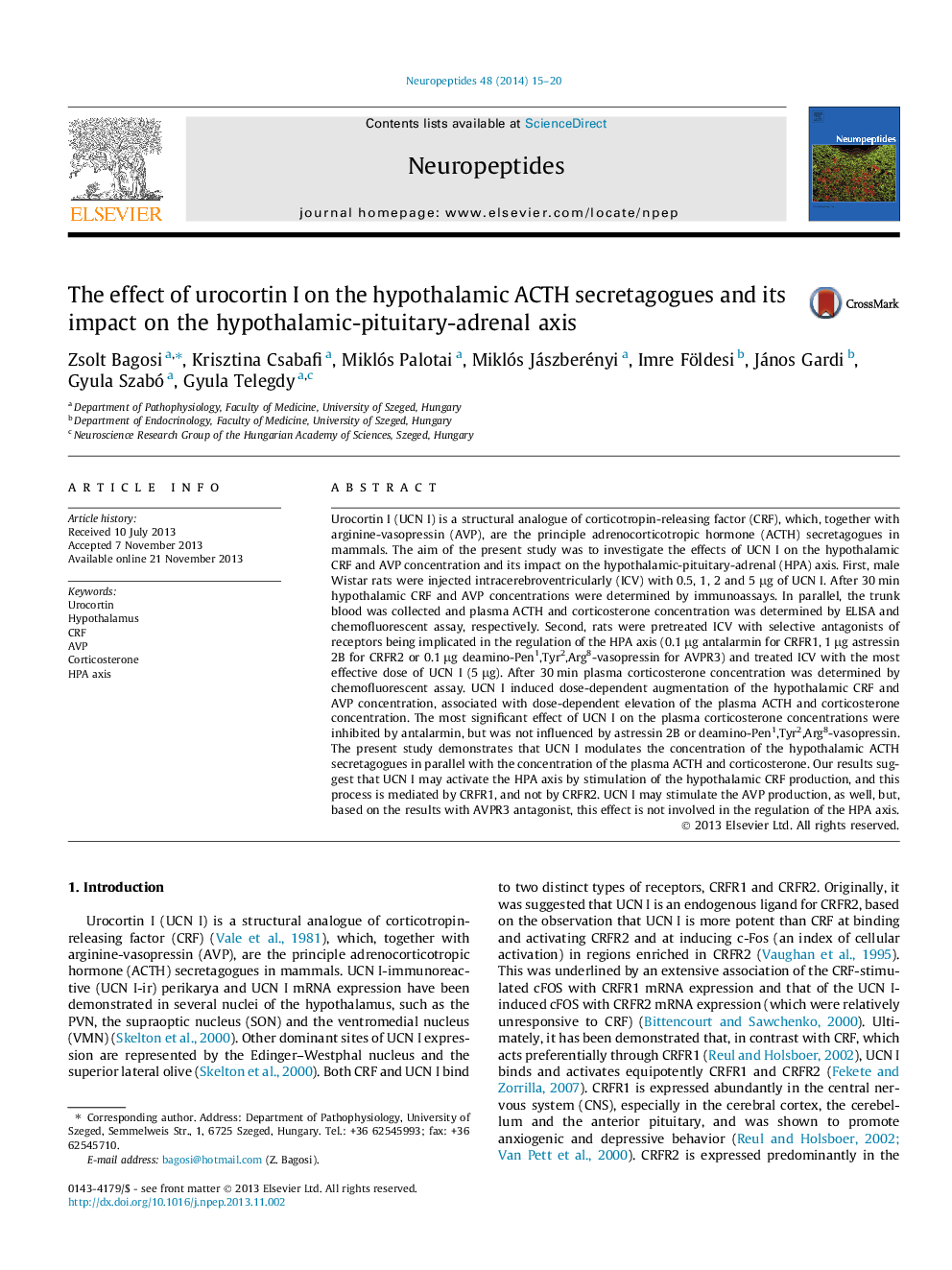| Article ID | Journal | Published Year | Pages | File Type |
|---|---|---|---|---|
| 2808115 | Neuropeptides | 2014 | 6 Pages |
Urocortin I (UCN I) is a structural analogue of corticotropin-releasing factor (CRF), which, together with arginine-vasopressin (AVP), are the principle adrenocorticotropic hormone (ACTH) secretagogues in mammals. The aim of the present study was to investigate the effects of UCN I on the hypothalamic CRF and AVP concentration and its impact on the hypothalamic-pituitary-adrenal (HPA) axis. First, male Wistar rats were injected intracerebroventricularly (ICV) with 0.5, 1, 2 and 5 μg of UCN I. After 30 min hypothalamic CRF and AVP concentrations were determined by immunoassays. In parallel, the trunk blood was collected and plasma ACTH and corticosterone concentration was determined by ELISA and chemofluorescent assay, respectively. Second, rats were pretreated ICV with selective antagonists of receptors being implicated in the regulation of the HPA axis (0.1 μg antalarmin for CRFR1, 1 μg astressin 2B for CRFR2 or 0.1 μg deamino-Pen1,Tyr2,Arg8-vasopressin for AVPR3) and treated ICV with the most effective dose of UCN I (5 μg). After 30 min plasma corticosterone concentration was determined by chemofluorescent assay. UCN I induced dose-dependent augmentation of the hypothalamic CRF and AVP concentration, associated with dose-dependent elevation of the plasma ACTH and corticosterone concentration. The most significant effect of UCN I on the plasma corticosterone concentration was inhibited by antalarmin, but was not influenced by astressin 2B or deamino-Pen1,Tyr2,Arg8-vasopressin. The present study demonstrates that UCN I modulates the concentration of the hypothalamic ACTH secretagogues in parallel with the concentration of the plasma ACTH and corticosterone. Our results suggest that UCN I may activate the HPA axis by stimulation of the hypothalamic CRF production, and this process is mediated by CRFR1, and not by CRFR2. UCN I may stimulate the AVP production, as well, but, based on the results with AVPR3 antagonist, this effect is not involved in the regulation of the HPA axis.
